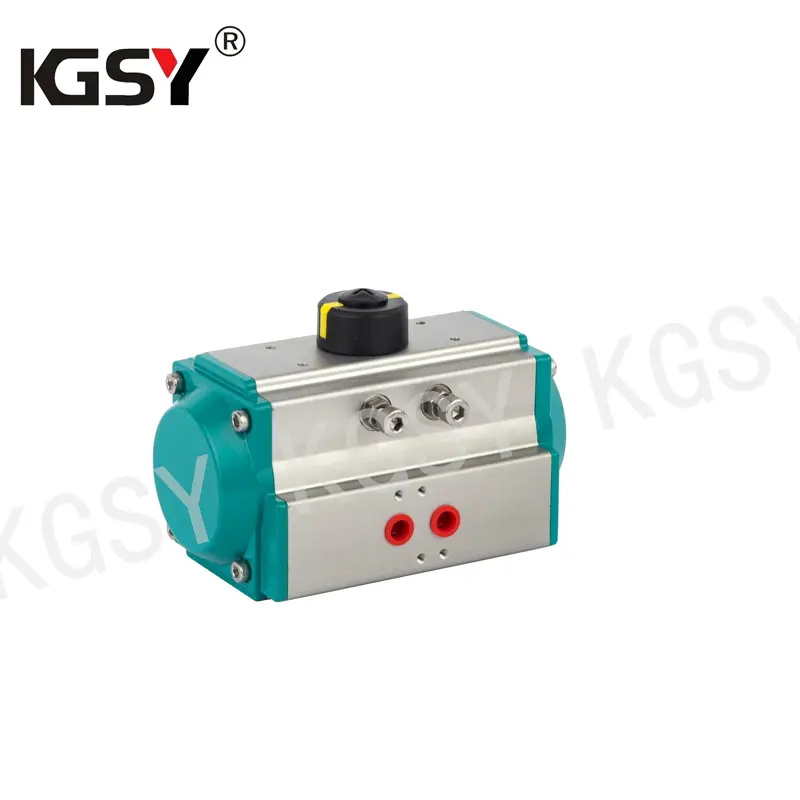Electric actuators are divided into two types: electric and pneumatic. Many people may ask what is the difference between them and how to tell them apart? Today, let's talk about the characteristics and applications of pneumatic and electromechanical equipment.
Electric actuators are also known as electric actuators. According to the movement mode, it is divided into: angular stroke arrangement and straight stroke; electric regulating valve or electric butterfly valve commonly used in valve types of supporting facilities; AC alternating current or DC direct voltage is the driving energy; according to the posture method, it can be divided into two categories; the advantage is electric energy Convenient, fast data signal transmission speed, long transmission distance, favorable for centralized control system, high sensitivity, high precision, convenient with electric adjustment instrument panel, simple assembly and wiring. The disadvantage is that the structure is cumbersome, the driving force is small, and the average equipment failure rate is higher than that of pneumatic actuators. It is suitable for places with low explosion-proof requirements and lack of pneumatic valves.
Pneumatic electric actuator
As we all know, pneumatic actuators are a classification of actuators. The following is the specific content of the difference between pneumatic actuators and electric actuators. The management mechanism and adjustment mechanism of the pneumatic actuator are unified, and the management mechanism includes plastic film type, piston machine type, fork type and rack type. The piston engine has a long stroke and is suitable for places where the driving force is large; the diaphragm type has a small stroke and can only push the valve seat immediately. Fork-type pneumatic actuator has large torque and small space. The torque curve is more like that of a gate valve, but not as pretty; common in high-torque valve bodies. The rack pneumatic actuator has the advantages of simple structure, stable and reliable posture, safety and explosion-proof. Compared with electric actuators, pneumatic actuators
1. In terms of technical performance, the advantages of pneumatic actuators mainly include the following four aspects:
(1) Good adaptability to the working environment, especially good flammability. Flammable and explosive. Lots of dust. Strong magnets. Compared with hydraulic presses in harsh working environments such as radiation sources and vibration, electronic devices. Superior electrical Control System.
(2) Quick action and quick response.
(3) The load is large and can meet the application of high torque derivation (but the current electric actuator has gradually reached the pneumatic load level at the current stage).
(4) The motor is easily damaged when the stroke arrangement is blocked or the valve seat is blocked.
2. The advantages of electric actuators mainly include:
(1) No need to assemble and protect various pneumatic pipes.
(2) The load can be guaranteed without driving force, while the pneumatic actuator must continuously provide working pressure.
(3) The fluid density of the gas without the "leakage" of the electric actuator makes the reliability of the pneumatic actuator slightly weaker.
(4) Compact structure and exquisite volume. Compared with the pneumatic electric actuator, the structure of the electric actuator is relatively simple. The main electronic control system consists of electric actuators and a three-part DPDT power switch. A circuit breaker for easy installation and some cables.
(5) The driver source of the electric actuator is very flexible, and the general automobile power supply can meet the requirements, while the pneumatic actuator must have a pneumatic valve and reduce the driving device.
(6) The electric actuator is quieter because there is no other working pressure equipment. In general, if the pneumatic electric actuator is installed with a muffler under the premise of a large load.
(7) In pneumatic equipment, the signal must be converted into a gas data signal, and then into a signal. The transfer speed is relatively slow. Complex control circuits are not suitable for excessive component levels.
(8) The electric actuator is better in control accuracy.
The electric actuator has poor safety and explosion-proof ability, the motor posture is not fast enough, and the motor is easily damaged when it encounters resistance during the stroke or the valve seat is bound. However, since the electric actuator itself has the function of a servo motor, no external servo amplifier is required; an overvoltage protection module can be used; the front and rear postures are randomly selected; the gate valve is locked after power off; damaged. Electric actuators are continuing to improve and expand the development trend of applications.

Post time: Jul-01-2022


